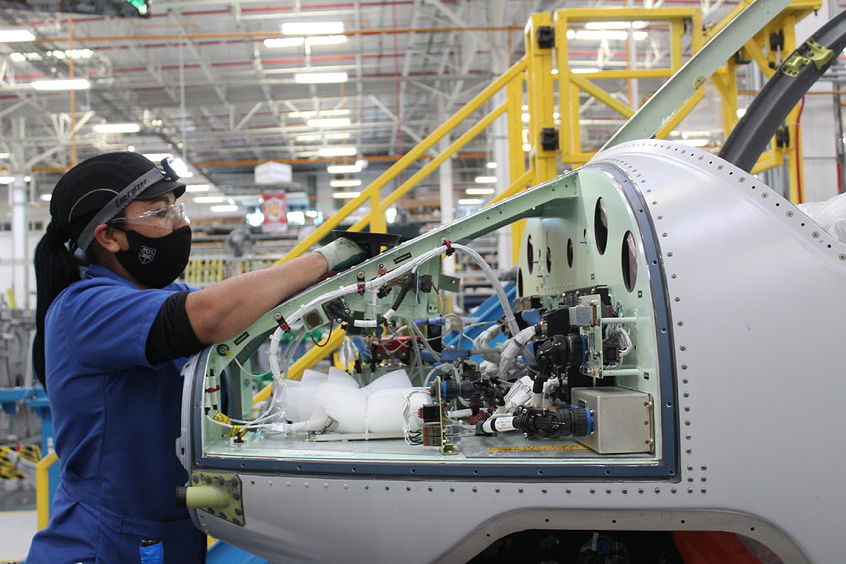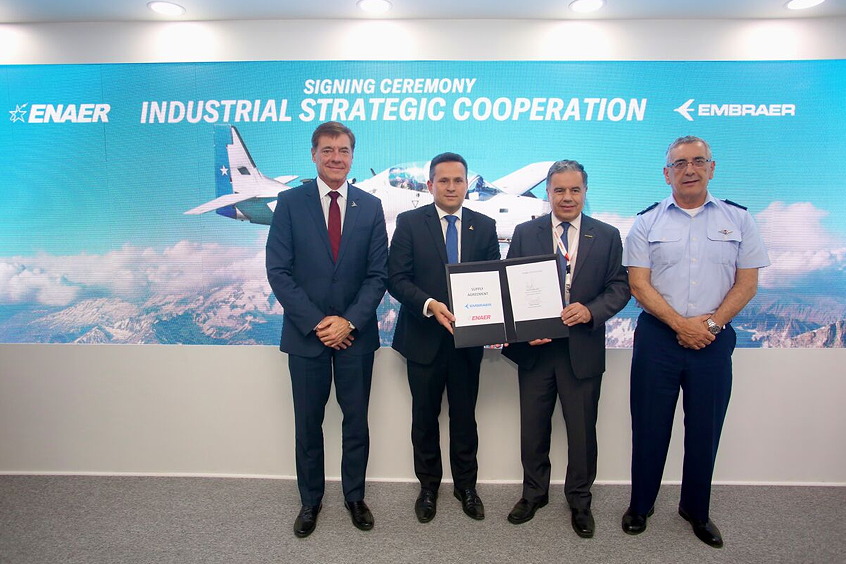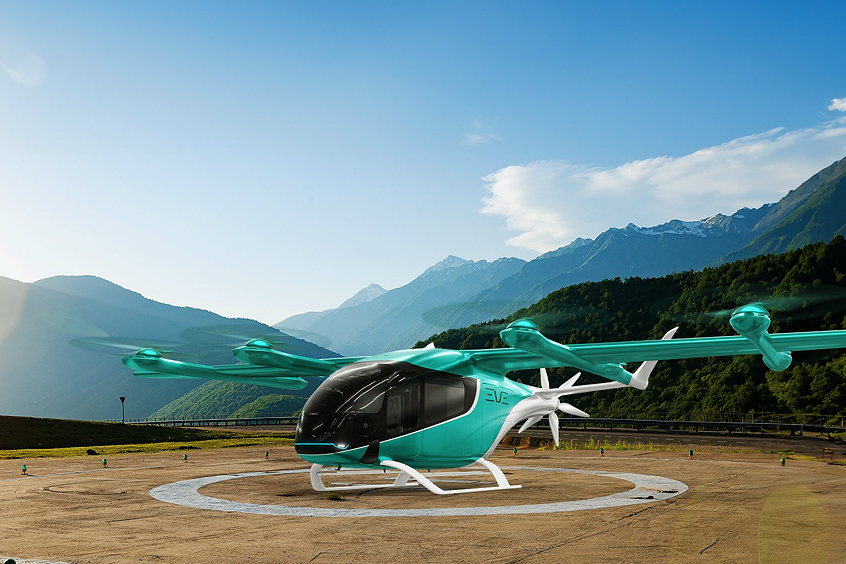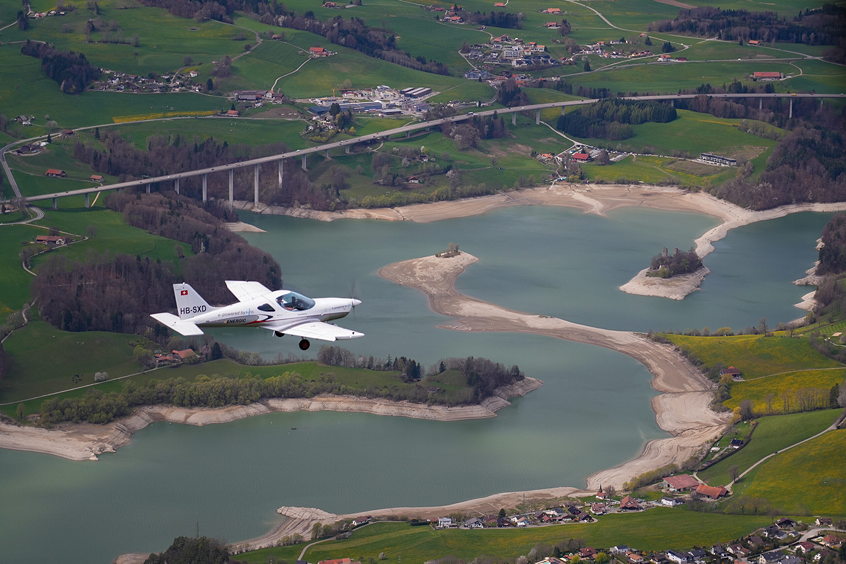Today, aircraft companies such as Airbus use carbon fiber composites to produce vertical stabilizers, wings, or even whole fuselage sections, because they are lighter and stronger than steel. The components are made up of several layers which must be perfectly positioned and in the right order to ensure that they can withstand the enormous loads experienced in flight. The laser projection system COMPOSITE PRO from Lüneburg-based laser specialists LAP is used to ensure the layers are perfectly positioned. With the latest product development, the system can now even be controlled via tablet PC.
The idyllic Hanseatic City of Stade in Lower Saxony, 45 kilometers west of Hamburg, is home to an Airbus production plant with 1,500 employees. At this plant, the world's second-largest aircraft company produces fuselage sections for the Eurofighter, wings and fuselage segments for the twin-engine wide-body A350 aircraft, and the vertical stabilizer for the A380. Airbus relies on carbon fiber-reinforced plastic (CFRP), which makes products much lighter while also providing increased stability in comparison to steel. Switching to this lightweight construction material is particularly beneficial for airlines, because the reduced aircraft weight enables them to save on fuel costs.
Most visitors are amazed when they take a peek behind the scenes in Stade. Semi-monocoques, which are made from special steel and are up to 35 meters in length/7 meters in width, can be seen at several workstations. The semi-monocoques, known as tools, serve as a negative mold for the carbon fiber components. CFRP mats in all kinds of shapes are pre-soaked in special resin and placed into the monocoques layer by layer by skilled workers. Once all of the fiber mats have been placed in, a vacuum film is laid over the molds and they are compressed using negative pressure. In the final step, the layers are subjected to pressure and heat in an autoclave in order to cure them into a solid structure. The layering process cannot be described as straightforward. It requires exceptional precision to ensure that the finished components can withstand the enormous forces that they will be subjected to in the air for years to come.
Airbus uses over 100 LAP laser projectors at the Stade site Airbus started looking for a reliable positioning system several years ago to make it easier for aircraft companies to position the numerous CFRP mats and to increase product quality. The aircraft company struck gold with the Lüneburg-based laser specialists LAP, who started developing point and line lasers as early as 1984 and now provide complex, high-precision system solutions for industrial companies all over the world. "We first introduced Airbus to our laser projection system COMPOSITE PRO, which they could use to position the CFRP layers, in 2003. At that time, the Airbus site in Stade was just starting to produce components for the Eurofighter," remembers Harald Grimm, product manager at LAP. Airbus was delighted with the product, and has been purchasing its laser projection systems from LAP ever since. There are over one hundred COMPOSITE PRO systems in use in Stade alone, and many hundreds more in Airbus sites around the world.
So how does the laser system work? The projectors hang from swiveling arms at regular intervals at a height of about four meters above the model. They project individual lines or outlines from the digital construction plans onto the work surface at a scale of 1:1. This means that the staff know precisely where to place the CFRP mats and in what order, and they can align them with the laser lines with millimeter precision. It is also possible to reproduce warnings, notes, and numberings. This gives staff extra support and increases the reliability of the production process.
Three laser colors for different information To make it easier to differentiate between steps, LAP has also fitted the laser system with a multicolor functionality which provides three projection colors: the green and red integrated laser sources can be switched on at the same time to produce yellow as the third color. COMPOSITE PRO can display the three colors at the same time and independently of one another.
Users control projectors with tablet PCs The projectors are connected to a central server in a control cabinet, on which all of the projection data is saved. The server is connected to several clients, which can be controlled using a keyboard and mouse, a touchscreen, or even – in the most recent development – with a Windows tablet PC. "This makes work much easier for users," says product manager Grimm. "They are no longer being dragged away from the production process and their important routine. Instead of having to go to the stationary client PC, which can sometimes be some distance away, staff can now select the next production step straight from their tablet PC."
The display can show the current work situation as an outline drawing or in different 3D views. Users can switch between projected shapes instantly, without any waiting time at all. The intuitive software control is also proving particularly popular. All of the functions can be mastered in less than an hour.
"Compared to the mechanical templates and aids that aircraft companies used to have to use, wing construction is faster, more flexible, and more reliable with the COMPOSITE PRO laser system," says Grimm with conviction. It is not possible to make subsequent adjustments to the internal structure of defective CFRP parts that arise because the layers have been laid in incorrectly or imprecisely. However, it is virtually impossible for this to happen now anyway. If the design of the parts being produced changes at the last minute, companies no longer have to have expensive new templates made. Instead, the updated CAD data simply has to be supplied to the projectors.
Easy integration into the IT landscape The software is compatible with all of the usual CAD data formats used in the industry. To make it even easier to integrate the system into individual IT landscapes, LAP has developed an Application Programming Interface (API). This is a software package which companies can use to program their own applications so that the projectors can be connected to their own control systems. "More and more aircraft companies ideally want to integrate the laser system straight into their quality management system," says Harald Grimm. "LAP is therefore looking into whether it would be worth adding cameras to the laser system in the future, which would document every step with photos. The aircraft company could save them in a database and prove that the production steps are correct at any given time."
Laser projectors improve SMEs' competitive advantage Working with Airbus has boosted LAP's growth, particularly on the Asian market. "Particularly for smaller companies in the aircraft industry, investing in the laser system pays for itself very quickly, as it can increase production rates by up to 100%," says Grimm. Furthermore, these companies can quickly manufacture components with complex geometries, they are no longer reliant on expensive templates, and they can reduce waste and reworking. Another advantage of COMPOSITE PRO is that the projectors are very light. "They only weigh three kilograms and are by far the lightest devices on the market. If a projector fails, it can be quickly replaced by one person. The heavier products available from competitors require lifting platforms and several people."
News of these benefits is now starting to reach other industries too. The manufacturers of rotor blades for wind power plants, for example, want to get in on the act as well. "A few years ago, many manufacturers worked on paper when designing the rotor blades, so there was no database for laser projectors," explains Grimm. But now things are starting to change. "Product designers and engineers are increasingly working with CAD data in this industry too, and are therefore laying the foundations for using our COMPOSITE PRO laser system in their production processes."
| Contact details from our directory: | |
| Airbus Deutschland GmbH | Wings, Empennages, Wing Flaps, Fuselage Sections, Wing Spars, Final Assembly, Aircraft Doors, Aircraft Interiors |
| LAP GmbH Laser Applikationen | Laser Positioning Equipment |
| Related directory sectors: |
| Production Equipment |
Weekly news by email:
See the latest Bulletin, and sign up free‑of‑charge for future editions.

Bell Mexico delivers 800th commercial aircraft cabin

Chile's ENAER expands cooperation with Embraer

Eve names KAI as supplier for eVTOL pylons
